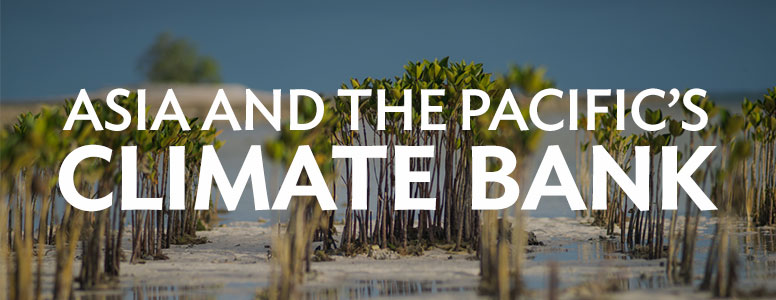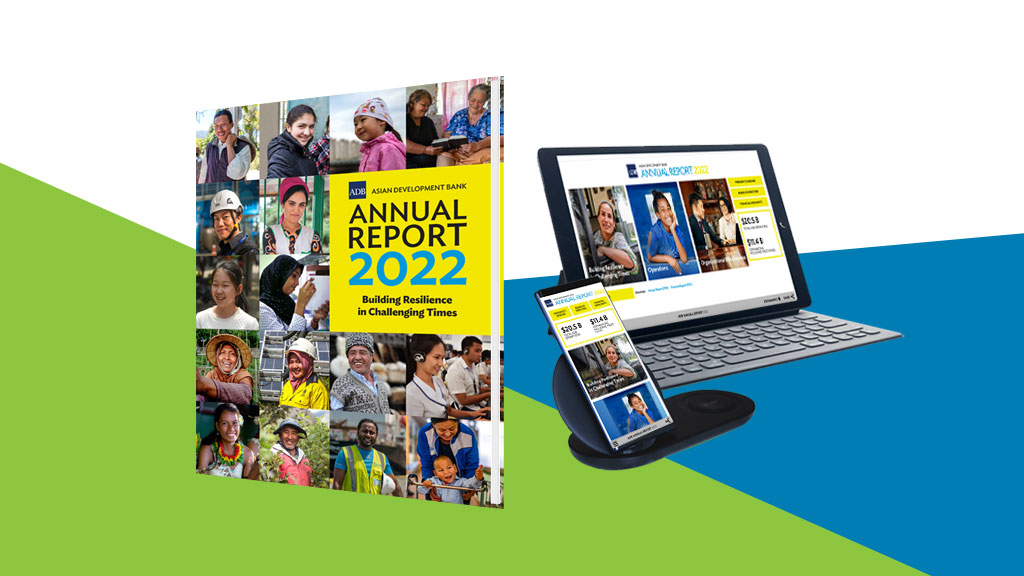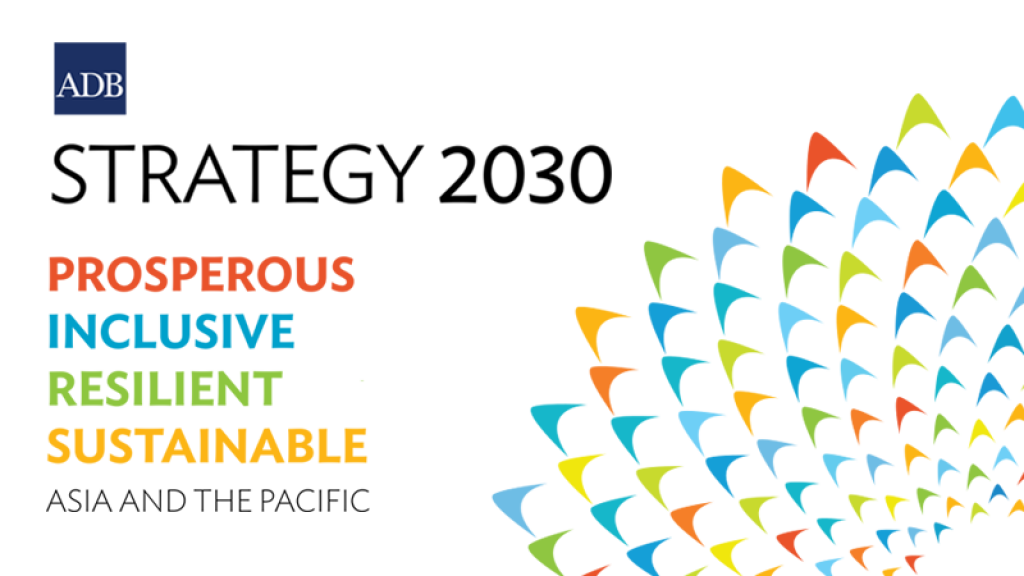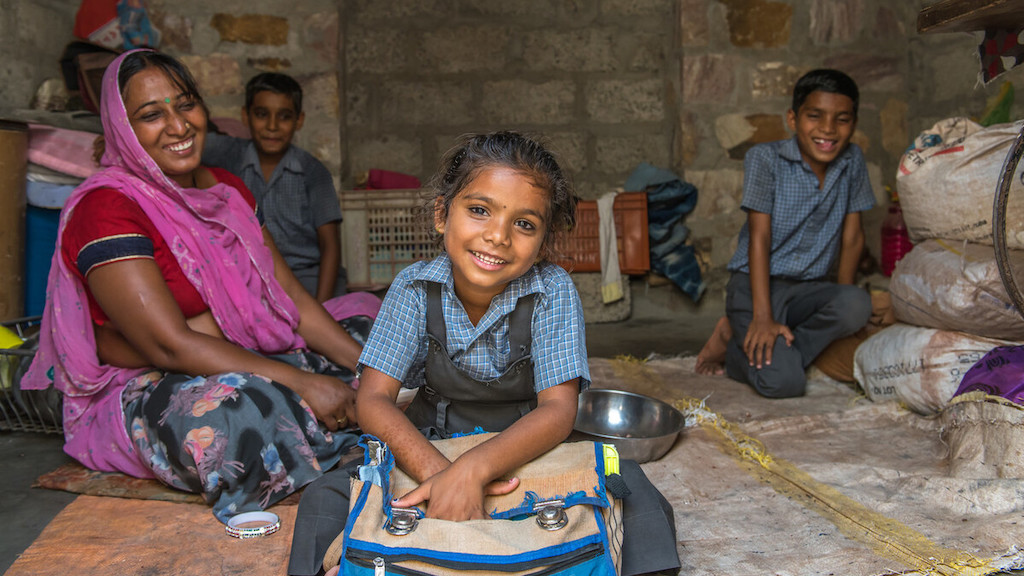ADB is committed to achieving a prosperous, inclusive, resilient, and sustainable Asia and the Pacific, while sustaining its efforts to eradicate extreme poverty.
Established in 1966, it is owned by 68 members—49 from the region.
ORGANIZATION
ACCOUNTABILITY
ADB supports projects in developing member countries that create economic and development impact, delivered through both public and private sector operations, advisory services, and knowledge support.
Learn about ADB activities in member countries and regional offices.
Get information on country economic data and analysis, development assistance, and regional initiatives.
With employees from more than 60 countries, ADB is a place of real diversity.
Work with us to find fulfillment in sharing your knowledge and skills, and be a part of our vision in achieving a prosperous, inclusive, resilient, and sustainable Asia and the Pacific.
CAREERS AND SCHOLARSHIPS
FOR INVESTORS
INFORMATION ON WORKING WITH ADB FOR...
PROCUREMENT AND OUTREACH
Who We Are
ADB is committed to achieving a prosperous, inclusive, resilient, and sustainable Asia and the Pacific, while sustaining its efforts to eradicate extreme poverty. Established in 1966, it is owned by 68 members—49 from the region.
About ADB
The Asian Development Bank (ADB) envisions a prosperous, inclusive, resilient, and sustainable Asia and the Pacific, while sustaining its efforts to eradicate extreme poverty in the region. Despite the region's many successes, it remains home to a large share of the world's poor: 263 million living on less than $1.90 a day and 1.1 billion on less than $3.20 a day.
ADB assists its members, and partners, by providing loans, technical assistance, grants, and equity investments to promote social and economic development.
ADB maximizes the development impact of its assistance by facilitating policy dialogues, providing advisory services, and mobilizing financial resources through cofinancing operations that tap official, commercial, and export credit sources.
Members
From 31 members at its establishment in 1966, ADB has grown to encompass 68 members—of which 49 are from within Asia and the Pacific and 19 outside.
| Member | Year of membership |
|---|---|
| Afghanistan | 1966 |
| Armenia | 2005 |
| Australia | 1966 |
| Azerbaijan | 1999 |
| Bangladesh | 1973 |
| Bhutan | 1982 |
| Brunei Darussalam | 2006 |
| Cambodia | 1966 |
| Cook Islands | 1976 |
| Federated States of Micronesia | 1990 |
| Fiji | 1970 |
| Georgia | 2007 |
| Hong Kong, China | 1969 |
| India | 1966 |
| Indonesia | 1966 |
| Japan | 1966 |
| Kazakhstan | 1994 |
| Kiribati | 1974 |
| Kyrgyz Republic | 1994 |
| Lao People's Democratic Republic | 1966 |
| Malaysia | 1966 |
| Maldives | 1978 |
| Marshall Islands | 1990 |
| Mongolia | 1991 |
| Myanmar | 1973 |
| Nauru | 1991 |
| Nepal | 1966 |
| New Zealand | 1966 |
| Niue | 2019 |
| Pakistan | 1966 |
| Palau | 2003 |
| Papua New Guinea | 1971 |
| People's Republic of China | 1986 |
| Philippines | 1966 |
| Republic of Korea | 1966 |
| Samoa | 1966 |
| Singapore | 1966 |
| Solomon Islands | 1973 |
| Sri Lanka | 1966 |
| Taipei,China | 1966 |
| Tajikistan | 1998 |
| Thailand | 1966 |
| Timor-Leste | 2002 |
| Tonga | 1972 |
| Turkmenistan | 2000 |
| Tuvalu | 1993 |
| Uzbekistan | 1995 |
| Vanuatu | 1981 |
| Viet Nam | 1966 |
| Member | Year of membership |
|---|---|
| Austria | 1966 |
| Belgium | 1966 |
| Canada | 1966 |
| Denmark | 1966 |
| Finland | 1966 |
| France | 1970 |
| Germany | 1966 |
| Ireland | 2006 |
| Italy | 1966 |
| Luxembourg | 2003 |
| Netherlands | 1966 |
| Norway | 1966 |
| Portugal | 2002 |
| Spain | 1986 |
| Sweden | 1966 |
| Switzerland | 1967 |
| Türkiye | 1991 |
| United Kingdom | 1966 |
| United States | 1966 |
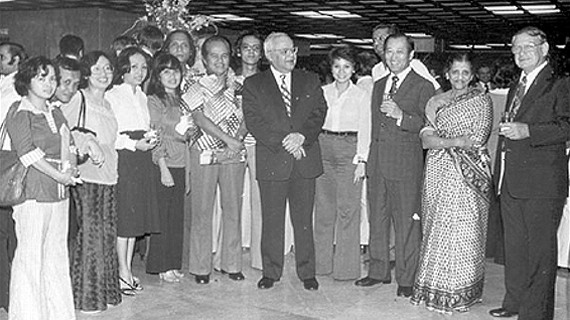
Origins
ADB was conceived in the early 1960s as a financial institution that would be Asian in character and foster economic growth and cooperation in one of the poorest regions in the world.
A resolution passed at the first Ministerial Conference on Asian Economic Cooperation held by the United Nations Economic Commission for Asia and the Far East in 1963 set that vision on the way to becoming reality.
The Philippines capital of Manila was chosen to host the new institution, which opened on 19 December 1966, with 31 members that came together to serve a predominantly agricultural region. Takeshi Watanabe was ADB's first President.
During the 1960s, ADB focused much of its assistance on food production and rural development.
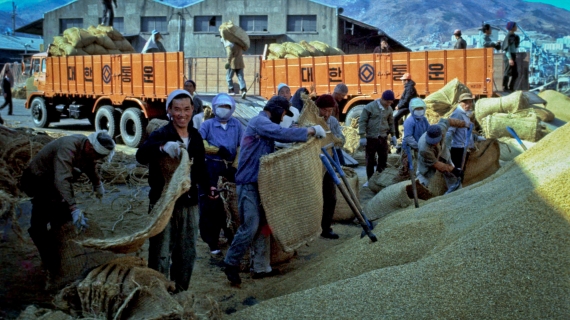
1970s
When the world suffered its first oil price shock, ADB increased its support for energy projects, especially those promoting the development of domestic energy sources in member countries.
Cofinancing operations, in which ADB manages the funds of other organizations, began to provide additional resources for ADB projects and programs. ADB’s first bond issue in Asia—worth $16.7 million and issued in Japan—took place in 1970.
A major landmark was the establishment in 1974 of the Asian Development Fund to provide low-interest loans to ADB's poorest members.
By the end of the decade, some Asian economies had improved considerably and no longer needed ADB's assistance.
Lending Operations by Fund Type, 1968-1976
Lending Operations by Region, 1968-1976
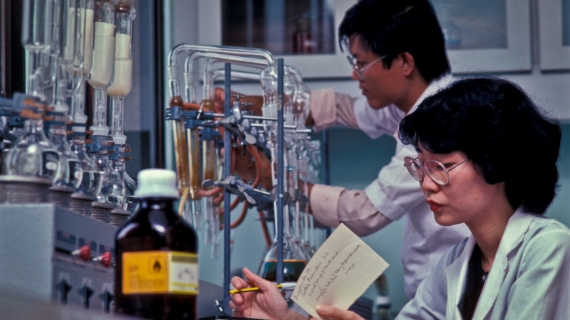
1980s
In the wake of the second oil crisis, ADB continued its support to infrastructure development, particularly energy projects. ADB also increased its support to social infrastructure, including projects involving microfinance, the environment, education, urban planning, health issues, and helping women and girls.
In 1982, ADB opened its first field office—in Bangladesh—to bring operations closer to the people in need. Later in the decade, ADB began working with nongovernment organizations to help disadvantaged groups.
Lending Operations by Fund Type, 1977-1986
Lending Operations by Region, 1978-1986
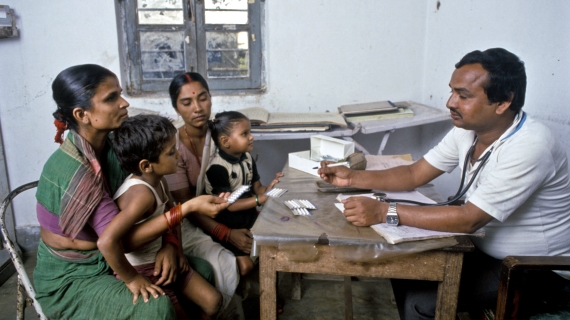
1990s
In 1995, ADB became the first multilateral organization to have a Board-approved governance policy to ensure that development assistance fully benefits the poor. Policies on involuntary resettlement and indigenous peoples were also put in place.
ADB's membership continued to expand with the addition of several Central Asian countries following the end of the Cold War.
In mid-1997, a severe financial crisis hit the region, setting back Asia's economic gains. ADB responded with projects and programs to strengthen financial sectors and create social safety nets for the poor. ADB approved its largest single loan—a $4 billion emergency loan to the Republic of Korea—and established the Asian Currency Crisis Support Facility to accelerate assistance.
In 1999—recognizing that economic development was bypassing many people in the region—ADB adopted poverty reduction as its overarching goal.
Lending Operations by Fund Type, 1987-1996
Lending Operations by Region, 1987-1996
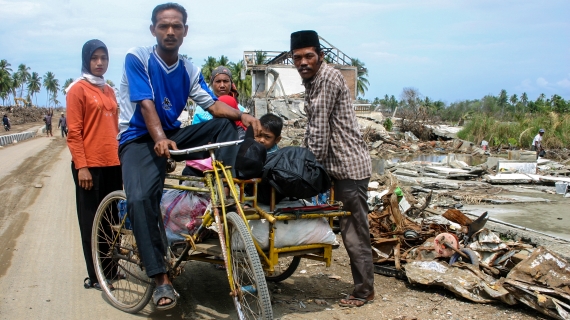
2000s
With the new century, ADB focused on helping its member countries achieve the Millennium Development Goals.
In 2003, the severe acute respiratory syndrome (SARS) epidemic hit the region, making it clear that fighting infectious diseases requires regional cooperation. ADB began providing support at national and regional levels to help countries more effectively respond to avian influenza and the growing threat of HIV/AIDS.
ADB also had to respond to unprecedented natural disasters, committing more than $850 million for recovery in areas of India, Indonesia, Maldives, and Sri Lanka hit by the December 2004 Asian tsunami. In addition, a $1 billion line of assistance to help victims of the October 2005 earthquake in Pakistan was set up.
In 2009, ADB's Board of Governors agreed to triple ADB's capital base from $55 billion to $165 billion, giving it more resources to respond to the global economic crisis.
Lending Operations by Fund Type, 1997-2006
Lending Operations by Region, 1997-2006
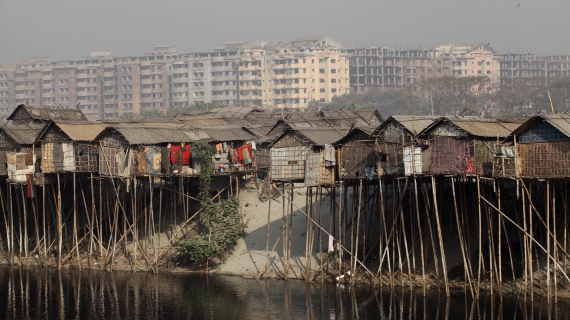
2010s
Asia moved beyond the economic crisis to emerge as a new engine of global growth in 2010 when the region’s gross domestic product increased by 9%. This was more than double the global growth rate during the same period and well above the 5.9% rate recorded in the region in 2009.
While the speed and strength of its economic recovery surprised many, the region still faced daunting challenges and remained home to two thirds of the world’s poor and a growing problem of inequality. This increasing gap between the rich and poor focused ADB on the need to promote inclusive growth in the region.
In response to reforms initiated by the Government of Myanmar, ADB resumed operations in the country. In April 2014, ADB established offices in Nay Pyi Taw and Yangon.
In May 2014, plans were announced to combine the lending operations of ADB’s two main funds, the Asian Development Fund and its ordinary capital resources. The merger will boost ADB’s total annual lending and grant approvals to as high as $20 billion—50% more than the current level when it takes effect in January 2017.
As the era of the Millennium Development Goals (MDGs) draws to a close, the results have been mixed. While ADB’s work has contributed to Asia and the Pacific slashing extreme poverty by more than half, the region is still home to 1.2 billion people who live on $3.10 a day or less and almost three-quarters of the world’s underweight children. About 600 million people have no access to electricity and 1.7 billion still lack improved sanitation. A huge amount of work still must be done with the new Sustainable Development Goals as important guideposts.
Lending Operations by Fund Type, 2007-2016
Lending Operations by Region, 2007-2016
Takehiko Nakao (28 April 2013- 16 January 2020)
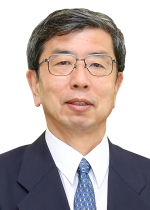
Takehiko Nakao joined ADB on 28 April 2013 and served as ADB President for almost 7 years until 16 January 2020.
Under his leadership, ADB expanded its operations through an increase in new lending and grant from $14 billion in 2013 to $22 billion in 2018 while incorporating more advanced technologies into projects, Ordinary Capital Resources and concessional lending operation of the Asian Development Fund (ADF) were merged, which enabled the expansion of operations thanks to much larger combined equity and leverage for concessional lending, and Strategy 2030 was launched.
Other key achievements include important knowledge works including ADB’s 50 years history book, visits to many member countries, cooperation with development partners, institutional reforms to make ADB “stronger, better and faster”, proactive human resource management, and improving financial sustainability of the staff pension system by introducing defined contribution plan for new hires.
Haruhiko Kuroda (1 February 2005 - 18 March 2013)
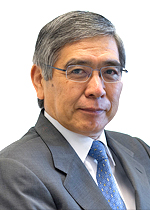
Haruhiko Kuroda joined ADB on 1 February 2005 and served as ADB President for more than 8 years until 18 March 2013.
Under his leadership, ADB tripled its operations from $7.4 billion in 2005 to $21.57 billion in 2012 including cofinancing, formulated its long-term plans as set out in Strategy 2020, and carried out many internal reforms. To meet the region’s growing demand for development finance, Mr. Kuroda led ADB’s first general capital increase in 14 years, which tripled its capital base to $165 billion, and two replenishments of the Asian Development Fund, raising over $23 billion to help meet the needs of ADB’s poorest member countries.
Mr. Kuroda’s tenure covered a period of significant growth in the region, but also one of tremendous challenges. During the 2008 global financial crisis, which affected many of ADB’s developing member countries, ADB provided much-needed assistance through the establishment of a $3 billion Countercyclical Support Facility to meet urgent needs. ADB also expanded its Trade Finance Program, which supported $2 billion in trade, bolstered small and medium-sized enterprises, and protected jobs and industries in the most challenging markets.
Other key achievements include the establishment of the ADB-administered ASEAN Infrastructure Fund, which will help meet the needs for infrastructure connectivity in Southeast Asia, and ADB’s resumption of operations in Myanmar after more than 20 years.
Tadao Chino (16 January 1999 - 31 January 2005)

Tadao Chino, ADB's seventh President, took office during a challenging period. Several developing member countries (DMCs) were still suffering after the 1997-1998 financial crisis and needed help recovering.
Under Mr. Chino's leadership, several important ADB policies and strategies were approved. These include Poverty Reduction Strategy, Private Sector Development, ADB reorganization, and Resident Mission Policy. ADB also adopted its long-term strategic framework, which set ADB’s strategic direction and laid the basis of its assistance to DMCs in their effort to achieve the Millennium Development Goals by 2015.
ADB took a proactive role in post-conflict reconstruction in several Asian countries, including Afghanistan, Cambodia, Sri Lanka, and Timor-Leste. Finally, in early 2004, donor countries agreed to a $7 billion replenishment for the Asia Development Fund (ADF) IX period 2005-2008.
Tadao Chino passed away on 17 July 2008 in Japan at the age of 74.
Mitsuo Sato (24 November 1993 - 15 January 1999)
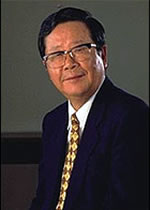
Mitsuo Sato, ADB's sixth President, oversaw a wide-ranging slate of reforms to strengthen the ability of ADB to respond to the needs of its developing member countries.
Under Mr. Sato, ADB underwent a re-organization to shift to a closer country-focus approach. ADB also instituted a process to ensure project quality and committed itself to pursuing social development objectives.
Mitsuo Sato passed away on 20 October 2002 in Japan at the age of 69.
Kimimasa Tarumizu (24 November 1989 - 23 November 1993)
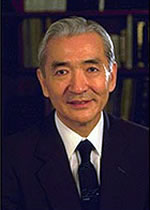
Kimimasa Tarumizu, ADB's fifth President, oversaw the inauguration of ADB’s new headquarters in Mandaluyong, Metro Manila. The transfer took place after ADB had been located on Roxas Boulevard for 19 years. The move allowed ADB to centralize its operations, which had spread to several locations in Metro Manila over the years. Under Mr. Tarumizu, ADB's annual lending commitments rose to almost $5 billion. By 1991, cumulative total lending reached $37.6 billion for 1,039 projects.
On the borrowing front, ADB entered new markets with the launch in 1991 of a $300 million "Dragon bond" issue which was offered simultaneously in the capital markets of Hong Kong, China; Singapore; and Taipei,China.
Kimimasa Tarumizu passed away on 21 February 2009 in Japan at the age of 78.
Masao Fujioka (24 November 1981 - 23 November 1989)
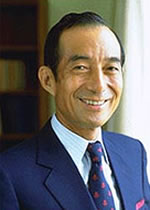
Masao Fujioka was a man in a hurry when he took over in 1981 as fourth ADB’s President. Upon his arrival at the airport, he sent his bags home and was driven straight to the office. Mr. Fujioka was instrumental in promoting greater coordination of ADB operations, increased cofinancing, and equity investments to private enterprise.
In 1986, the People's Republic of China joined ADB, and a first loan was approved for India—a $100 million lending facility to the Industrial Credit and Investment Corporation of India for onlending to private sector enterprises.
Under Mr. Fujioka, additional replenishments were made to ADF, and the Japan Special Fund was created. In 1983, Mr. Fujioka also presided over a third general capital increase (GCI III), which raised ADB's capital by 105 percent.
Masao Fujioka passed away on 27 December 2021 in Japan at the age of 97.
Taroichi Yoshida (24 November 1976 - 23 November 1981)
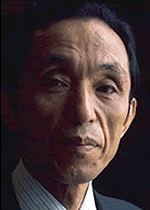
Taroichi Yoshida, appointed in 1976 as third ADB President, was concerned from the outset with economy and husbandry. During his administration, additional strategies were developed to reduce poverty in the Asia-Pacific region, and operations were restructured to take a more country-focused view.
Multiproject loans, a cost-effective means of funding projects too small for ADB’s involvement, were introduced. A first multiproject loan to Tonga was made.
In 1978, donors agreed to a second replenishment to ADF (ADF III) in the amount of $2.15 billion to cover the period from 1979-1982. In 1980, ADB initiated sector lending. This new approach entails a single loan that is used to finance a cluster of subprojects with a specific sector or subsector. The first sector loans were provided to Indonesia for water supply and Thailand for highway construction.
Taroichi Yoshida passed away on 14 March 2014 in Japan at the age of 94.
Shiro Inoue (25 November 1972 - 23 November 1976)
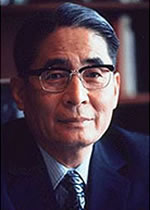
In 1972, Shiro Inoue was appointed as ADB's second President. Under Inoue, lending commitments rose steadily from $316 million in 1972 to $776 million in 1976. In response to the economic dislocation of the first oil crisis on the region's developing countries, ADB supported the development of indigenous energy resources and dam projects for electricity generation.
Membership also continued to grow. Bangladesh and Myanmar joined ADB in 1973, followed by a number of newly independent Pacific island countries. In 1974, the Asian Development Fund was established to streamline ADB's means for financing concessional loans.
Shiro Inoue passed away on 11 July 2010 in Japan at the age of 95.
Takeshi Watanabe (24 November 1966 - 24 November 1972)
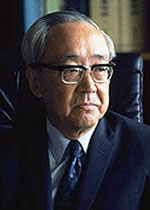
Takeshi Watanabe, the first President of ADB, combined idealism with practicality and toughness with compassion. Mr. Watanabe once likened ADB to "a family doctor" who tries to learn about the health of his many patients so he can help in their hour of need. Policies and targets were formulated, and regional surveys were undertaken to develop a fuller understanding of the social and economic conditions of ADB's developing member countries.
ADB approved its first loan—a $5 million to the Industrial Finance Corporation of Thailand for onlending to industrial enterprises—on 23 January 1968, just a little more than a year after it had started business.
Takeshi Watanabe passed away in Japan on 23 August 2010 at the age of 104.
Annual Report
ADB Annual Report 2022
ADB’s Annual Report 2022 summarizes how ADB combined finance and knowledge, and leveraged partnerships to help its developing member countries (DMCs) move on from the COVID-19 pandemic and address new crises and longer-term development challenges.
New commitments are presented under the seven operational priorities of Strategy 2030 and are complemented by examples of earlier projects that have improved people’s lives across Asia and the Pacific.
Financial Highlights
2022 Commitments
$0 B
Total ADB Operations
$0 B
Cofinancing, including trust funds
$0 B
Private Sector Commitments
$0 B
Climate Commitments
ADB Commitments by Region, 2022
ADB Corporate Data
Funding Information
Total amount of commitments (loans, grants, and investments signed in a given year) and projects per ADB developing member country.
Projects Cofinanced
Cofinancing operations enable ADB’s financing partners, governments or their agencies, multilateral financing institutions, and commercial organizations to participate in financing ADB projects. Additional funds are provided in the form of official loans and grants, technical assistance, other concessional financing, and commercial cofinancing such as B loans, risk transfer arrangements, parallel loans and equity, guarantee cofinancing, and cofinancing for transactions under ADB’s Trade and Supply Chain Finance Program.
Climate Change Financing at ADB
Tackling climate change, building climate and disaster resilience, and enhancing environmental sustainability is a priority of ADB's new Strategy 2030. ADB is elevating its ambition to $100 billion in cumulative climate financing from its own resources to its developing member countries (DMCs) in 2019-2030. In 2018, ADB committed to ensuring that at least 75% of its operations support climate action by the end of the decade..
Policies and Strategies All Policies, Strategies, and Plans
Strategy 2030
Strategy 2030 sets the course for ADB’s efforts to respond effectively to the Asia and Pacific region’s changing needs. Under Strategy 2030, ADB will expand its vision to achieve a prosperous, inclusive, resilient, and sustainable Asia and the Pacific, while sustaining its efforts to eradicate extreme poverty.
Strategy 2030 Sector Directional Guides
To complement the operational plans in translating Strategy 2030 and its operational priorities into action at the sector level, ADB has prepared a sector directional guide for each of the following sectors: education, energy, finance, health, transport, urban, and water.
Partnership Strategies
The country partnership strategy is ADB's primary platform for designing operations to deliver development results at the country level.
The regional cooperation strategy outlines how an ADB-defined region or subregion can work together to foster economic growth and cooperation.
Transparency and Accountability
- Access to Information Policy
- Accountability Mechanism Policy 2012
- Cooperation between Asian Development Bank and Nongovernment Organizations
- Anticorruption Policy: Harmonized Definitions of Corrupt and Fraudulent Practices
- Anticorruption Policy: Proposed Clarifications and Related Changes to Consulting and Procurement Guidelines
- Safeguard Policy Statement
- Evaluation Policy
- Translation Guidelines (2019)
ADB has formalized strategic partnerships with a number of multilateral organizations. Some examples are provided below:
Multilateral Banks and Multilateral Financial Institutions
World Bank (WB)
The memorandum of understanding emphasizes closer consultation on country assistance strategies, the elimination of duplication of efforts, the harmonization of operational procedures and processes, and the enhancement of efficiency and effectiveness at country and institutional levels.
Asian Infrastructure Investment Bank (AIIB)
The memorandum of understanding strengthens collaboration, including cofinancing, between ADB and AIIB in matters of common interest, and sets out areas for a more strategic cooperation in the Asian region.
European Bank for Reconstruction and Development (EBRD)
The memorandum of understanding focuses on joint operational activities in Central Asian Republics in institution development, environment, infrastructure, and private sector development.
Corporacion Andina de Fomento
The memorandum of understanding aims to foster knowledge management, promote exchange of best practices, and enhance policy and private sector dialogue, and South–South cooperation between Asia and Latin America.
European Investment Bank (EIB)
The memorandum of understanding covers cooperation in projects that involve private sector and public–private partnerships, climate protection, in developing risk-mitigating financial instruments, and funding in local currency.
Inter-American Development Bank (IDB)
The partnership framework focuses on joint implementation, information exchange capacity building, and policy research in aid for trade, climate change, regional economic integration, south–south cooperation, aid effectiveness, among others. There is also a memorandum of understanding covering cooperation on sustainable low carbon transport.
International Financial Institutions—harmonized development results indicators for private sector investment operations
The memorandum of understanding sets forth the intent of the 25 international financial institutions that signed it to harmonize data collection on private sector operations by adopting a common set of indicators, their definitions, and measurement. The intent is to reduce the reporting burden on private sector clients and enable comparison of data across projects and countries.
New Development Bank (NDB)
The memorandum of understanding facilitates collaboration in matters of common interest and sets out areas for stratgic cooperation toward the achievement of common objectives.
Organizations with Global Outreach
Global Environment Facility (GEF)
The memorandum of understanding expands ADB's direct access to GEF resources to include direct access to allocation of GEF resources for the preparation and implementation of GEF projects.
Organisation for Economic Co-operation and Development (OECD)
The memorandum of understanding covers collaboration at regional, country, sector, program, and project levels in aid effectiveness, anticorruption, governance, local economic development, environment, and finance. The 2009 memorandum of agreement includes a joint activity on "Asian Pension Reform."
World Health Organization (WHO)
The partnership involves a grant agreement for the implementation of the project, "Prevention and Control of Avian Influenza in the Asia and the Pacific."
World Trade Organization (WTO)
The memorandum of understanding which expired in 2004 covered implementation of joint technical assistance programs for ADB's developing member countries.
Regional Organizations
Association of Southeast Asian Nations (ASEAN)
The memorandum of understanding aims to help accelerate ASEAN regional cooperation and integration process in Asia. There is also a grant agreement for the implementation of the project, "Prevention and Control of Avian Influenza in the Asia and the Pacific."
South Asian Association for Regional Cooperation (SAARC)
The memorandum of understanding aims to support the efforts of the countries in South Asia to attain a sustainable reduction in poverty.
Southeast Asian Ministers of Education Organization (SEAMEO)
The memorandum of understanding explains the operational framework and practical modalities for the cooperation on education development issues.
ADB has established specific strategic frameworks with a number of bilateral aid agencies and/or government departments, with whom specific agreements have been signed.
Agence Française de Développement (AFD)
The partnership framework (signed in March 2010) explains the partners' commitment to work closely together and jointly mobilize their resources to promote sustainable growth, fight poverty, and protect the environment. In 2010, an independent review of the partnership covering the period 1997–2009 was completed.
Australian Aid
The partnership framework identifies the partners' commitment to a shared objective to assist developing countries to reduce poverty and achieve sustainable development; Millennium Development Goals (MDGs) as a focus of international efforts to reduce poverty by 2015; delivery of effective aid in line with Paris Declaration on Aid Effectiveness and the Accra Agenda for Action; and Principles for Good International Engagement in Fragile States and Situations.
Bundesministerium für wirtschaftliche Zusammenarbeit und Entwicklung (BMZ)
The letter of intent identifies commitment to cooperate in education, water, energy, transport, health, finance, urban and environment sectors through cofinancing, seminars, conferences, staff exchanges, and other technical arrangements.
Deutsche Gesellschaft für Technische Zusammenarbeit (GTZ)
The memorandum of agreement explains the administrative arrangements on coordination of assistance to Brunei Darussalam–Indonesia–Malaysia–Philippines East ASEAN Growth Area (BIMP-EAGA).
Japan Water Agency (JWA)
The letter of intent focuses on the collaboration to improve water security in river basins through the Network of Asian River Basin Organizations.
Swedish International Development Cooperation Agency (Sida)
Under a risk transfer arrangement, Sida guarantees a repayment of principal of up to $155 million of ADB’s sovereign ordinary capital resources portfolio of ongoing loans to support ADB’s sustainable level of lending.
United States Environmental Protection Agency (US-EPA)
The letter of intent provides the formal mechanism for cooperation on activities that help to promote human health and the environment in Asia.
The United Nations (UN) is an international organization founded in 1945 after the Second World War. Due to its unique international character, and the powers vested in its founding charter, the UN can take action on a wide range of issues, and provide a forum for its 192 member states to express their views. The UN has a number of programs and funds with whom ADB has formalized relations:
UN Economic and Social Commission for Asia and the Pacific (ESCAP)
The memorandum of understanding contains the partners' commitment to support poverty reduction and inclusive and sustainable development in the Asia and Pacific. Priority areas include working together towards achieving the Sustainable Development Goals (SDGs) and promoting improved regional cooperation and connectivity.
UN Food and Agriculture Organization (FAO)
The memorandum of understanding provides the working arrangements particularly cost sharing arrangements to be implemented for investment-related and support activities. There is currently a grant agreement for the implementation of the project "Prevention and Control of Avian Influenza in the Asia and the Pacific."
In 2010, ADB and FAO, together with the International Fund for Agricultural Development, signed the Asia-Pacific Regional Food Security Partnership Framework to support the countries of Asia and Pacific region in their efforts to achieve food security through increased availability of, access to and utilization of adequate, safe and nutritious food by the poor and vulnerable.
UN Human Settlements Programme (HABITAT)
The memorandum of understanding seeks to intensify the partnership in urban infrastructure, with emphasis on the water and sanitation sector.
UN International Labour Organization (ILO)
The memorandum of understanding provides the operational framework and practical modalities for the cooperation focused on social protection.
UN Joint Programme on HIV/AIDS (UNAIDS)
The memorandum of understanding contains the understanding to work together through advocacy, policy development, and knowledge management toward achieving the Millennium Development Goal related to HIV-AIDS, and reduce the risk and vulnerability of individuals and communities to HIV-AIDS.
UN Development Programme (UNDP)
The memorandum of understanding provides the administrative arrangements in supporting international development in the Asia and the Pacific region. An example of this is the cooperation in implementing the ADB project "Capacity Development for Development Effectiveness Program" until April 2010.
UN Children's Fund (UNICEF)
The memorandum of understanding contains the commitment to join forces to fight disparities, reduce poverty, and ensure equitable and sustainable development benefits for all children in Asia and the Pacific.
UN Industrial Development Organization (UNIDO)
The memorandum of understanding contains the working arrangements in implementing activities such as joint studies, projects, workshops, conferences, and exchange of information promoting industrial development for poverty reduction, inclusive globalization, and environmental sustainability.
UN Office on Drugs and Crime (UNODC)
The letter of intent contains the understanding to cooperate in education programs on the dangers of drug abuse, illicit crop monitoring, and anti-money laundering, and anticorruption programs.
Civil Society
ADB has been engaged in partnerships with civil society for over a decade. The relationship is often triangular in nature, involving both client governments and civil society organizations, working to implement projects and technical assistance activities. For example, ADB's Nongovernmental Organization (NGO) Center manages cooperation agreements with the International Union for Conservation of Nature (IUCN) and the World Wide Fund For Nature (WWF). The memorandums of understanding [IUCN; WWF] signed with them formalize cooperation to realize the common aim of poverty reduction and environmentally sustainable development.
Another example is the partnership with the International Federation of the Red Cross (IFRC). With the signed letter of intent, IFRC and various ADB departments commit to collaborate in the areas of disaster preparedness and disaster response and health and community care.
Foundations
ADB signed its first memorandum of understanding with a foundation in January 2008 with the Aga Khan Development Network, formalizing a mature collaborative relationship, focused on poverty reduction and innovative approaches to bring civil society, the private sector, and government onto a common development platform.
ADB has also initiated consultations with a number of other foundations, including the Clinton Foundation. Cooperation with foundations is expected to grow in upcoming years.
Think Tanks, Research and Academic Institutions
ADB's cooperation with academic and research institutions covers a wide range of formal and informal aspects. Recognizing the need to leverage knowledge inside and outside the organization, ADB has signed formal cooperation agreements with five research or academic institutions, including institutional agreements with the Lee Kuan Yew School of Public Policy [memorandum of understanding] and a joint declaration of intent with the International Development Research Centre (IDRC).

